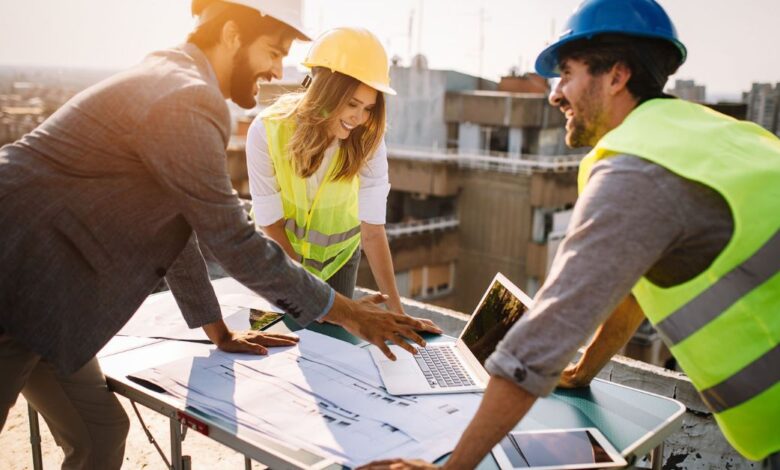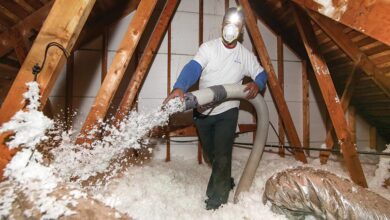Which Features Are Important for a Building Safety?

The never-ending lists of requirements found in building codes across the nation are there to protect the tenants of buildings. There are extra steps that may be taken above and beyond what is required by the regulations to better safeguard your construction and its inhabitants. Additional safety precautions might enhance your space’s usefulness and accessibility, particularly in complexes that frequently house senior citizens. If you want to know about your building’s environment and its lifecycle you should do a breeam hea 06 assessment UK and let yourself be updated with your building.
What Is Safety in Construction?
Safeguarding people and property from risks during construction is known as safety in construction. It entails both on-site safety—measures intended to protect personnel when they are at work—and off-site safety—measures taken to safeguard the general public from potential dangers within or adjacent to the construction site. Employers, employees, and government officials all work together to ensure the security of construction sites.

Construction site safety is a challenging topic since there are so many potential risks. A number of these risks are constant throughout the whole building process, whereas others are unique to particular phases. Potential risks include:
- electric dangers
- falling-off risks
- dangers of ground instability
- chemical risks, among others
In every structure, whether it be a home, business, or public area, safety is of the utmost importance. Safety elements that are implemented correctly may greatly lower the likelihood of accidents and injuries, including property damage. A designed, effective building integrates various security measures to safeguard its people, from the avoidance of fires to the integrity of the structure. The safety of the people who live in the building is ensure by several key safety elements that will be thoroughly cover in this guide.
Passive Fire Protection
Your building’s design and construction contain passive fire prevention systems to safeguard the structure and its inhabitants in the event of a fire. These characteristics are intend to contain the spread of the fire and lengthen the duration that your building will stay standing, which can help preserve lives and lessen the financial loss caused by a fire.
Fire-resistant construction materials and enhanced building structural components are a couple of instances of passive fire prevention. It also involves building techniques that prevent the spread of smoke and flames, such as adding fire-stop boards halfway through the framework of a wall and installing flame-rated walls, windows, and doorways in stairwells. Furniture made of fire-resistant materials is one example of a possession in your building that can provide fire protection through passive means.
- Smoke detectors: Place smoke detectors thoughtfully throughout the building, with a focus on the sleeping areas, kitchens, and public spaces. To make sure that these detectors are operating appropriately, check and service them often.
- Smoke detectors and fire alarms should work together to effectively inform inhabitants in the event of an emergency involving fires.
- Place extinguishers for fires on every level, close to probable fire sources like utility facilities or kitchens. Instruct users on how to operate them effectively.
- Sprinkler system: Putting up an automated irrigation system may help put out flames before they spread, giving people valuable time to get out and lessening the harm done to the property.
Escape Routes and Emergency Exits
Buildings must have well-design escape routes and emergency exits that are well-marked. Make sure the exits are clear, easy to reach. And outfitted with emergency lights so that people can find them in case of power outages. Regularly practise evacuation along with escape routes with the building’s tenants.
ADA Compliance for People with Impairments
Building accessibility for people with impairments is mandate by the Americans with Disabilities Act (ADA). While there are exceptions for religious organisations. Many of these requirements must still be met by your building, particularly when you are repairing or modernising it. Ramps, grab bars in the toilet, and handrails are a few examples of accessibility enhancements.
You should think about further enhancing their safety by providing excellent illumination to walking paths and other potentially dangerous places, making certain that any carpets or entrance mats stay firmly in place, and taking the necessary precautions to maintain the structure safe for people with disabilities.
Suitable Lighting
For both indoor and outdoor building safety, proper illumination is essential. Areas that are well-lit dissuade would-be criminals and lower the chance of falling or tripping. To improve security and save money on electricity. Install lighting with motion sensors in lots of parking lots as well as other external places.
Conclusion:
Any building endeavour should place a high premium on keeping building occupants safe. Building owners may create a safe and welcoming atmosphere for tenants, staff members. And visitors by including crucial safety elements such as elevators and fire protection systems. The facility will continue to be a welcoming and safe place for everybody who uses it with the aid of routine maintenance, classroom instruction, and compliance with safety requirements.





